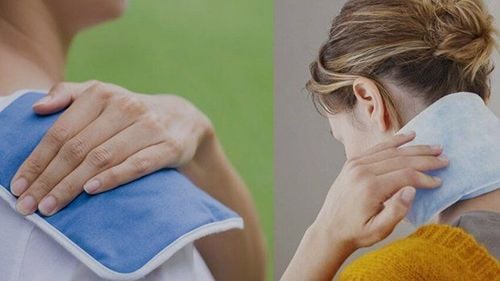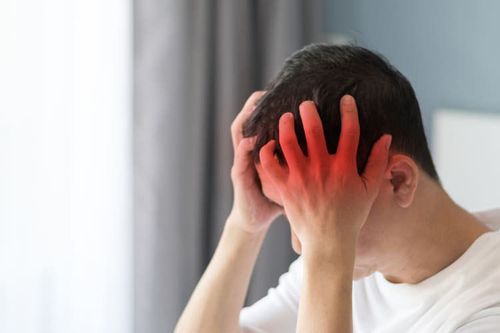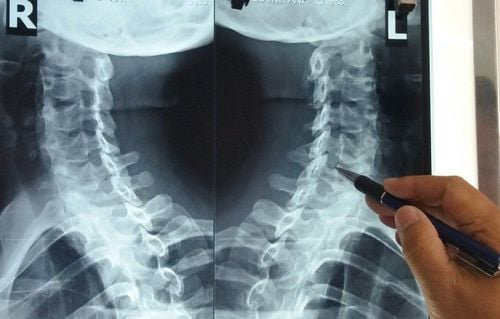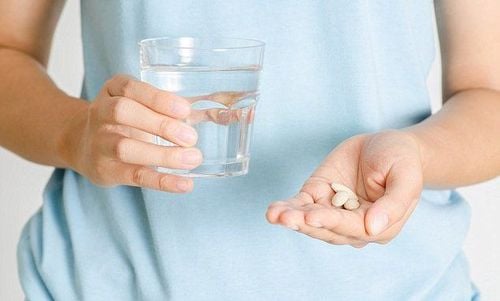This is an automatically translated article.
The leading cause of neck pain can include cervical disc disease. Pain relief can be done simply at home with simple measures. You can refer to some of the ways below to improve your neck motor function.
1. What is cervical disc disease?
Cervical disc disease is possibly the most common cause of neck pain. It is caused by an abnormality in one or more of the discs, the cushions located between the bones of the neck (vertebrae). When a disc is damaged, usually from wear or tear (degeneration) or from a herniated disc, it can lead to neck pain from inflammation or muscle spasms. In some severe cases, pain and numbness can occur in the arm due to nerve irritation or damage from nerve compression.
While pain medication, physical therapy, neck traction, and as a last resort, surgery can help relieve neck pain caused by cervical disc disease, there are also home remedies you can use to help relieve pain and speed up the healing process.
2. Home remedies for neck pain relief
2.1. Gentle neck activity
If you're like most people, you're probably living a busy, hectic life. But if you're living with cervical disc disease and increasing neck pain, it's important to temporarily cut back on intense activities. While resting, find a comfortable position - one that causes the least amount of neck pain. You can place a rolled up towel or pillow under your neck to keep your neck in a neutral position. However, resting doesn't mean crawling into bed and lying completely still. Staying immobile for more than a day or two can actually be harmful as it can weaken the muscles that support your neck and actually increase neck pain in the long run. While your neck is healing, adjust your activity level to a level you can comfortably handle. As you improve, gradually increase your activity level back to normal.
2.2. Cold/hot compress
People are often faced with the conundrum: Which should you use? In general, the recommendation is to use ice for the first 24 to 48 hours after an injury to reduce swelling, followed by heat to loosen muscles and improve stiffness. But with cervical disc disease, neither heat nor cold penetrate deeply to really reduce inflammation, so use whichever feels best. Regardless of whether you choose cold or heat, it should only be turned on for about 20 minutes at a time and then rest for at least 40 minutes. Wrap the ice or heat source in a towel - never put them directly on your skin, or you could get serious burns.

Chườm lạnh trong 24 đến 48 giờ đầu sau khi bị thương để giảm sưng
2.3. Neck stretching exercises
Once you feel well enough and approved by your doctor, do stretching exercises to relieve your neck pain and improve your flexibility.
It's best to do these exercises after warming up your muscles with a warm shower, bath, or towel.
Here are some simple cervical disc cures that you can do at home:
Slowly turn your head to the left. Use your left hand to gently press on your chin to make your head turn a little more. Hold for 20 seconds and slowly bring your head to the center. Repeat on the right side. Tilt your head to the left and try to touch your left ear to your shoulder. Using your left hand, gently press on your temples. Hold for 20 seconds and repeat on the right side. Bend your head forward and try to touch your chin to your chest. Relax your shoulders as you do this. Hold for 20 seconds and repeat. Lie on your back, knees bent, and place a pillow under your head and neck for support. Gently nod forward, as if you are saying "yes". Hold the pose for 10 seconds and then relax. Repeat 10 times. If you experience significant discomfort with any of these stretch marks, stop immediately.
2.4. Do exercise
Research is showing that exercise is an effective way to treat neck pain. According to a study in the Journal of the American Medical Association, women with chronic neck pain who performed strength and endurance exercises using resistance bands and light weights experienced significant reductions in pain. neck and disabled. It is important to stay active in general. Thirty minutes of aerobic exercise (walking, biking, swimming) a day can keep your back muscles strong. And the improved blood flow from exercise can nourish your spine keeping your spine healthy. Talk to your doctor, physical therapist, or personal trainer with expertise in working with people with neck pain to determine the right exercises for you.

Tập thể dục là biện pháp hiệu quả để giảm đau cổ
2.5. Get out of your slump
Poor posture is the main cause of neck pain. Think about your posture every time you sit, stand, or lift. Always try to keep your head and neck straight and make sure your back is supported. For example, when you sit at your desk, your computer should be at eye level and the chair should rest against your back (in other words, don't press your nose against the computer screen). Your mouse should be positioned low enough that you don't have to constantly reach for it. When you go to get something, don't lean forward. Instead, bend from your knees and keep your back straight, which will also help protect from low back pain.
If the above methods do not improve your condition, visit a medical facility, the doctor will examine and indicate the most useful treatment for you.
Vinmec International General Hospital is one of the hospitals that not only ensures professional quality with a team of leading medical doctors, modern equipment and technology, but also stands out for its examination and consultation services. comprehensive and professional medical consultation and treatment; civilized, polite, safe and sterile medical examination and treatment space.
Please dial HOTLINE for more information or register for an appointment HERE. Download MyVinmec app to make appointments faster and to manage your bookings easily.
Reference source: webmd.com












